Comments
-
Are these changes needed?Hi Stephen,
You are right.... the 50% figure that I used in my previous email is simply an assumption.... what we have been taught over the years to assume.... maybe those numbers and assumptions will change in the near future with more research. With the building techniques that I have personally witnessed here in Canada where the contractors put styrofoam panels on the basement foundation walls and sit those panels on top of the foundation wall footings and then pour their concrete floor to come butt up against those styrofoam panels, we often see cold joints forming that are as large as 1/4" to 3/8" along the perimeter walls because of the shrinkage that occurs in the concrete floor slab when it dries. I have also personally witnessed backdrafting of wood stoves and fireplaces when the radon fans were running even when the 20 watt fans were installed.... Up here in Canada, a very tight home with that size cold joint and good clean crushed stone under the concrete floor slab has to be closely monitored. Even a small amount of air drawn from the basement of a small home in those situations is too much. That is where we need a good micromanometer to adjust our pressures under the slab to a point where we have just a bit more suction pressure under the slab versus the stack effect in the home. Here I am talking about a differential of 1 Pa (.004 " WC) or less. In my area, we often see temperatures go down to -40 to -50 deg F in the coldest months of the winter. (Last winter was a good example)... Something we have to deal with here in Canada...I agree that the building techniques in different provinces or states over the years have differed and we need to consider those facts during our installations.... My main concern is not so much the loss of conditioned air (although I do consider that important) but the backdrafting of combustion appliances.which I have witnessed personally over the years... -
Are these changes needed?One other aspect here that Colin forgot to mention above is that mitigators in Canada look at radon mitigation from 2 angles.... one obviously is the reduction of the radon levels in the home and the second one is the health, safety and general economics for the occupants. We know that installing a larger than needed fan will obviously reduce the radon levels in the home to a very low level but if we assume that 50% of the air that is drawn by the radon fan is coming from inside the home, this could create possible back drafting problems with combustion appliances inside the home. In Canada, especially in the rural areas, we still see a lot of homes with fireplaces and wood stoves installed in the basements because of the weather we get up here in Canada and the high costs related to heating the homes for a good part of the year. This fact has increasingly become an issue over the last 10 years with the increased sealing and tightening up of the homes to minimize heat loss. When we have a very tight home, even the loss of a small amount of conditioned air from the basement causes undesired consequences for the homeowners in terms of back drafting of their combustion appliances and possible carbon monoxide poisoning. Our goal when installing radon mitigation systems in Canada is yes, to reduce the radon levels of ALARA and at the same time, minimize the loss of conditioned air and risk of back drafting issues which could cost us a lot of liability in the end. We need to find a balance between the two. This is where the we need to use precise instruments and a structured process to ensure we achieve both of those goals. Using a smoke pencil only tells us that we have achieved a negative pressure under the slab and that we will be able to prevent the radon from infiltrating into the home. It does not tell us that we might be pulling more conditioned air from the basement than what we really need thus causing additional costs for the homeowners on a yearly basis and possible back drafting issues. This can easily add up to hundreds of dollars per year. The homeowner will probably end up paying the cost of the system in additional heating and cooling costs over a 4 - 5 year period. Using a micromanometer to get precise numbers that we can rely on and having a well designed process helps to achieve that balance. Mitigator is happy and homeowner is happy. This process takes no more than 30 minutes during each job using the proper tools for the trade. And yes, like Colin, I install more 20 watt fans per year than any other type of radon fan. Every home is unique and we cannot rely on the data we achieved at a neighboring home to design our system for a different home in the same neighborhood. Its like saying that if we have the same two models of service vehicles and that each one will consume exactly the same amount of gas or fuel. One vehicle may be doing more work in a rural area while the other vehicle is doing more work in a city environment with more stop and go driving. The driver also has lot to do with the fuel consumption of the vehicles. Homeowners heat and operate their homes in different ways. This has an impact on the way we need to design our systems for each individual home taking into account those facts. Like Colin said, you can use Fantech's PFETK or communication testing equipment with a vacuum cleaner and pitot tube like that indicated in Health Canada's Professional Contractor's guide to accomplish your task. The trick here is using a micromanometer to get your precise numbers to work with. I can compare this to trying to cook a turkey in the oven. If we do not have a temperature dial on the oven that tells us what the temperature is set at in the oven, the only thing we know is that heating elements will be turning on in and that the oven will be heating up but we don't know if the temperature in the oven will be at 250 degrees F or at 450 degrees F. All we know is that the heating elements will be turning on and that the turkey will cook but we don't really know if in the end it will be undercooked or if it will be dry and burnt. That is essentially what the micromanometer is giving us as information. Precise numbers to work with. Is the cost of a good micromanometer in Canada worth it for mitigation work? You bet ya !!! I have at least one for every crew...More importantly, when homeowners see all the tools and the processes we use to design and get the job done, they realize that it is not something they could easily do themselves and this is probably one of the reasons that in Canada we are able to charge a going rate between $2500 to $3000 for for a simply radon mitigation job... And in most cases, they are happy and quick to pay that rate. Not something we see with a lot of other trades.
-
Slate tile and antique radios as a radon source?I agree with Rob.... if the house has a well, try testing the water supply to eliminate that as a possible source.... simply to do and effective...especially if there is a source of water usage such as a bathroom with a bath or shower near that bedroom in question...
Next question... were there any renovations done in the last few years where there were openings made in the concrete slab.... such as a new bathroom.... plumbers like to leave a nice big hole under the bathtub or shower to install his P-trap and rarely seals up that hole after his work...
I also agree with Bill and Rob..... get a good manometer to qualify your numbers.... you can get good used ones on ebay for around $250 - $350... -
Alarms are mandatory now on radon systemsUp here in Canada, up until a few years ago, I used to supply a Safety Siren Pro Series 3 unit to the homeowners with every radon mitigation installation I had completed.... noticed after a few years like Rob and Bob mentioned up above, that I was getting calls from the homeowners about high readings.... in most cases, it was relating to power outages and power surges when the power came back on.... since the units were plugged into the wall with a power supply, the would get spiked when the power came back on and the average radon levels on the unit would suddenly spike up really high... in the beginning, I used to go investigate each case and even put in additional monitors to make sure the mitigation system was working well and in all cases, found that the Safety Siren was the culprit.... so would do a reset to the unit and everything went back to normal.... after several situations like this, when I would get a similar call from a client, I would simply ask them if they had experienced a power outage in their neighborhood over the last week or two and the majority of them confirmed with a yes, so I would simply tell them to reset the unit and if the levels were still showing high after the reset, then I would go out and investigate.... never had a call back yet from the clients after they reset the unit.... I guess one of the things to look out for when a radon monitor has a power supply and is plugged in a wall plug...
-
Alarms are mandatory now on radon systemsFor the first 200 systems installed that I was involved with here in Canada, we installed audible alarms on ALL of them.... of the 200 systems that had alarms, I have replaced at least a dozen in the first 5 years where the power supplies stop working, probably because of the frequent power outages we get here in my region. Probably gets zapped with a power surge when the power comes back on...
Only way the occupants noticed that they were not working was that they noticed that the lights on the alarm were not lit up green or red anymore.... no lights period to show that the alarms were still operational.... I wonder how many more units might be out of commission because of defective power supplies and the homeowners don't know that they are not working because they have not checked to see if the lights on the alarm are lit up.... they may think that everything is ok but in reality, they are not operational anymore... I guess we get back to the "U" tube manometer debate again... how many homeowners really check them regularly ? No perfect solutions I guess... -
Alarms are mandatory now on radon systemsHere are some pictures of what we have to deal with on a regular basis up here is Canada

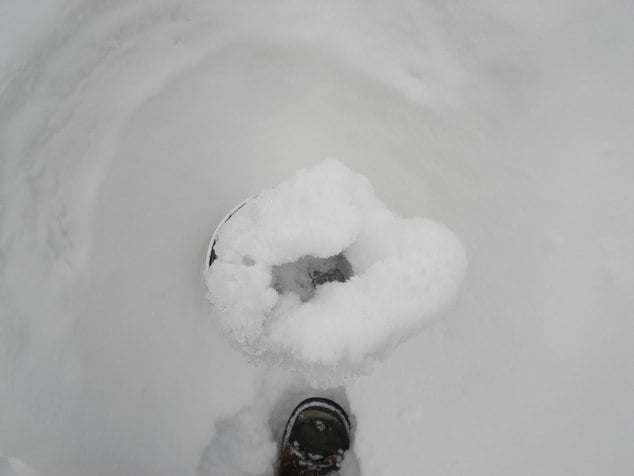
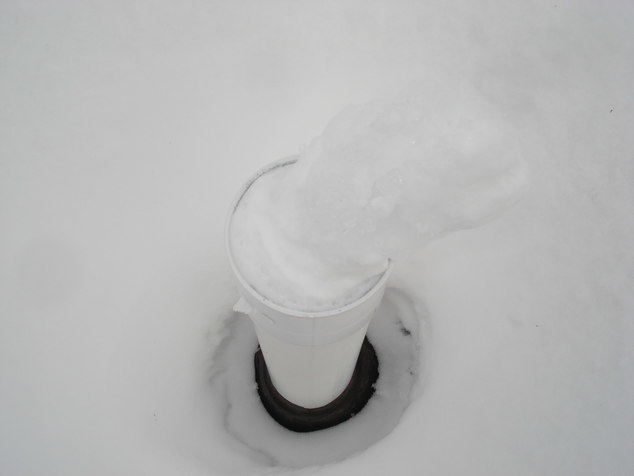
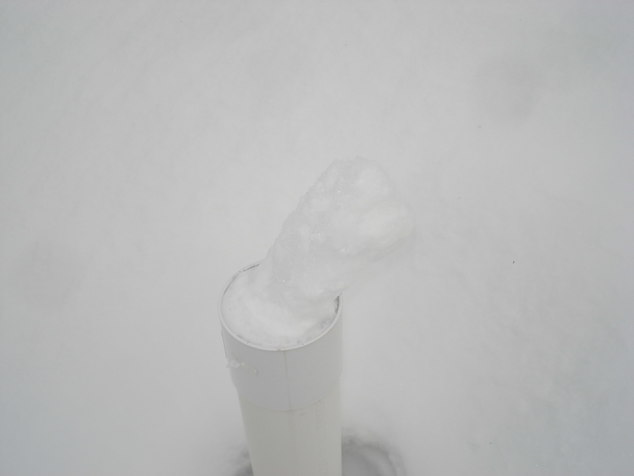
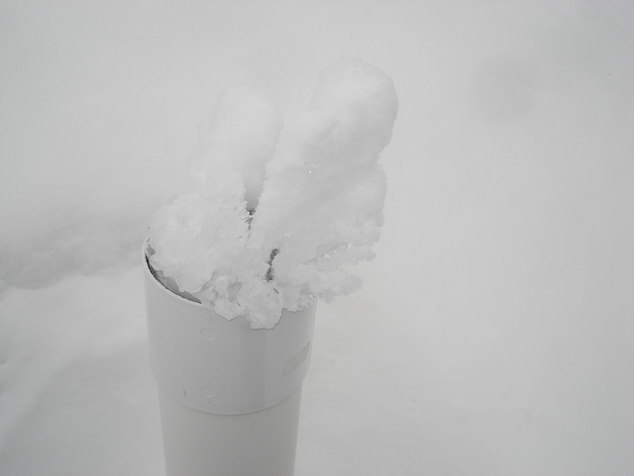
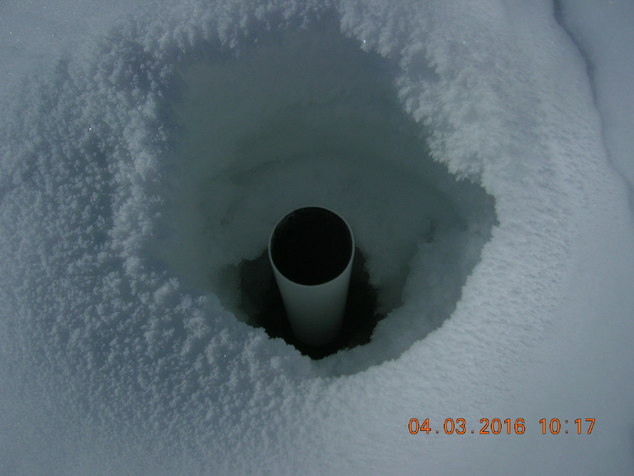
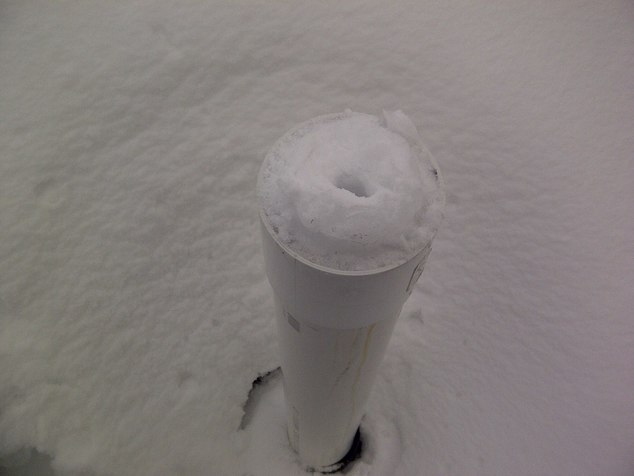
-
Pipe ThicknessIn Canada, if you have a hard time finding schedule 40 PVC pipe, you can also use ABS pipe which can be found in any hardware store and which is considered to have schedule 40 wall thickness as a replacement... The issue with the schedule 20 pipe is that it is very fragile when handling it in the winter time (develops hair line cracks length wise sometimes when mishandled in the back of the truck or onsite) and also does not have UV protection so if the pipe is exposed to the sun, it eventually gets very brittle..... the manufacturer does not recommend its use above ground for that reason.
-
Permanent Wood FoundationsWe have installed at least a dozen or more ASD systems for these kinds of homes over the last couple of years. In every case, we chose to put our main suction point near the center of the basement. Some have been with raised wooden floors and others with concrete floor slabs. In all the cases we did, there was good crushed stone under the wooden floor or concrete floor slab. The weak point with these types of basements is the joint between the PT foundation walls and edge of floor. There is a potential for a lot of air leakage at this point. By drawing from the center of the basement and controlling the flow from the fan to get only a minimum of 1 Pa across slab pressure at the edge of the slab. we minimize the loss of conditioned air in the home and at the same time, minimize the risk of backdrafting combustion appliances. We use dampers on the suction side of the fan to accomplish this. In most cases by using this technique, we are able to use either the smallest fan or medium sized fan. The simple fact that we are moving some air under the floor causes a decrease in the concentration of radon levels under the floor which in itself is sometimes sufficient to solve the radon problem. Whenever we find a raised wooden floor in these kinds of homes, we also look at the possibility of cutting an access hole through the wooden floor in a closet or mechanical room to see if they have a vapor barrier over the soil under the floor. If so, we have also in certain cases cut a hole through the vapor barrier for our piping and created a sub-membrane depressurization approach with that particular home. In all cases, we have had a 100% success rate at reducing the radon levels below Health Canada`s actionnable levels in the homes we have mitigated. It is also a good practice to leave behind a carbon monoxide detector ($25) with the homeowner as a safety precaution.
-
smoking vs. radon risk chartHere is a copy of an EPA fact sheet that probably dates back to 2014.
Hope it helps out...
Have a good day !!!
Marcel Brascoupe
MB Radon Solutions
Quebec, CanadaAttachment EPARadonFactsheet
(123K)
EPARadonFactsheet
(123K)
Marcel Brascoupe

Start FollowingSend a Message
- Terms of Service
- Useful Hints and Tips
- Sign In
- © 2026 Radon ListServ







